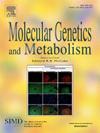SIMPATHIC: Accelerating drug repurposing for rare diseases by exploiting SIMilarities in clinical and molecular PATHology
IF 3.7
2区 生物学
Q2 ENDOCRINOLOGY & METABOLISM
引用次数: 0
Abstract
Rare diseases affect over 400 million people worldwide, with approved treatment available for less than 6 % of these diseases. Drug repurposing is a key strategy in the development of therapies for rare disease patients with large unmet medical needs. The process of repurposing drugs compared to novel drug development is a time-saving and cost-efficient method potentially resulting in higher success rates. To accelerate and ensure sustainability in therapy development for rare neurometabolic, neurological, and neuromuscular diseases, an international consortium SIMilarities in clinical and molecular PATHology (SIMPATHIC) has been established where we move away from the one drug one disease concept and move towards one drug targeting a pathomechanism shared between diseases, by applying parallel preclinical and clinical drug development. Here the consortium describes accelerators of drug repurposing pursued by the consortium, including 1) co-creation, 2) patient empowerment, 3) use of standardized induced pluripotent stem cell (iPSC)-derived disease models and cellular and molecular profiling, 4) high-throughput drug screening in neurons, 5) innovative clinical trial design, and 6) selection of appropriate exploitation and patient access models. In this way, a fast and effective drug repurposing pathway for several rare diseases will be established to reduce time from discovery to patient access.
求助全文
约1分钟内获得全文
求助全文
来源期刊

Molecular genetics and metabolism
生物-生化与分子生物学
CiteScore
5.90
自引率
7.90%
发文量
621
审稿时长
34 days
期刊介绍:
Molecular Genetics and Metabolism contributes to the understanding of the metabolic and molecular basis of disease. This peer reviewed journal publishes articles describing investigations that use the tools of biochemical genetics and molecular genetics for studies of normal and disease states in humans and animal models.
 求助内容:
求助内容: 应助结果提醒方式:
应助结果提醒方式:


